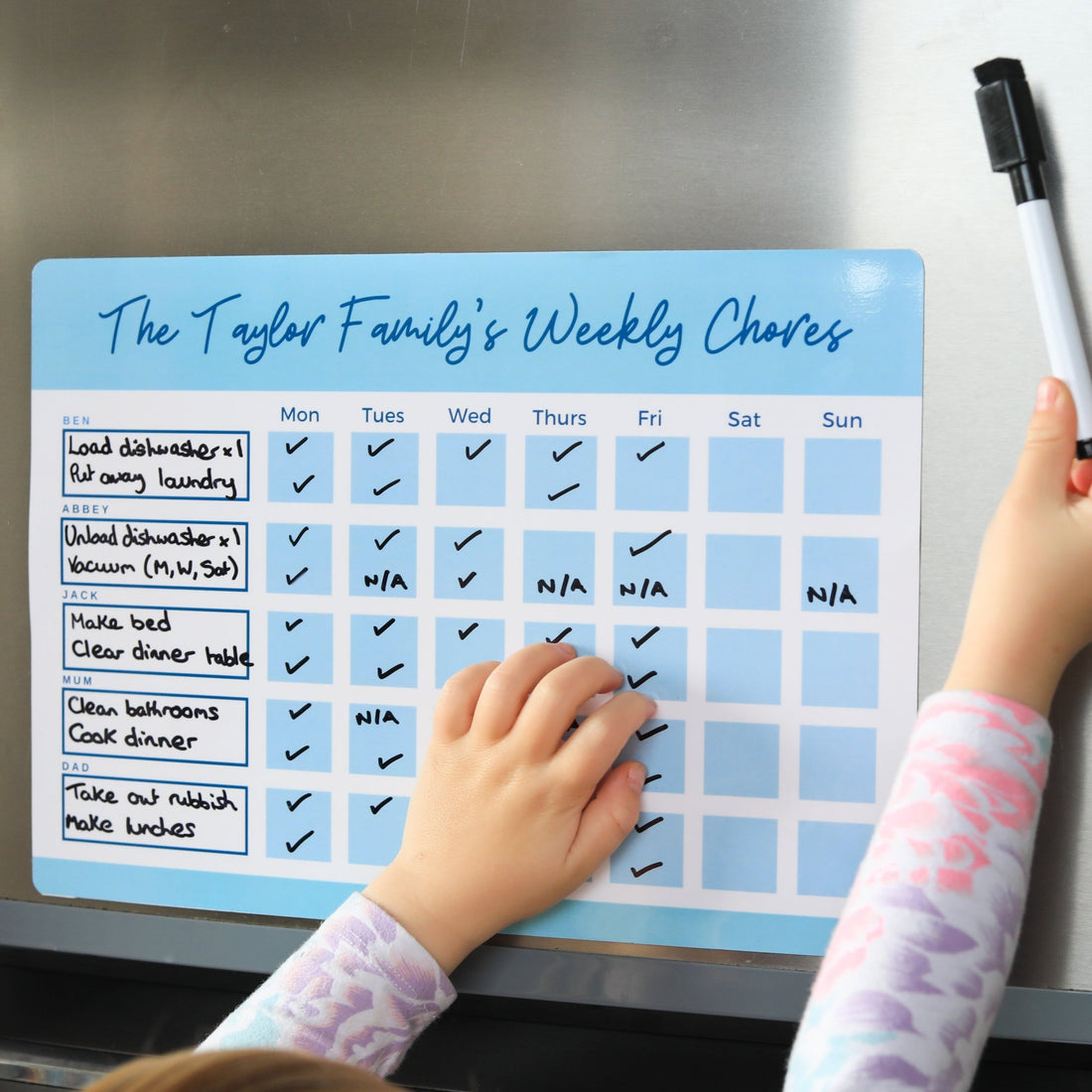Running a household is A LOT of work and it doesn't need to be all the responsibility of one person.
To help your household run smoother, consider using a Family Chore Chart. Chore charts can be a great tool as they instill a sense of responsibility in children, when you involve them in tasks they are capable of doing. Assign tasks based on the child’s age and capabilities and get buy-in from the kids at a family meeting.
By adding parents' names to the chore chart, children will perceive it to be fair and parents are leading by example. You could assign a specific area of the house for each family member to keep clean and tidy (e.g. kids – playroom & bedrooms) or alternatively, divide the household tasks up between all family members or even rotate the tasks by day or by week.
If you decide to divide the household tasks up by family members, below are the steps to follow:
- Make a list of all the household tasks that need to be done each week, such as cleaning the bathroom, making beds, vacuuming, washing dishes, putting away dishes, washing laundry, folding and putting away laundry, dusting, sweeping, clearing the table, making dinner, feeding pets, watering plants, mowing the lawn etc… The list goes on!!
- Divide jobs between the family – get buy in from children as to which chores they want to do, but make them choose from a list of age appropriate tasks (list below). Try not to use vague statements like ‘tidy your room’. Make the tasks more specific such as: ‘tidy your bookshelf’ or ‘pick up everything off the floor’. Hold a family meeting where you all set up the chart together. Assign younger children no more than 2 or 3 tasks a day, to avoid them feeling overwhelmed.
| Age Group | Tasks |
| 4-5 | make bed, clear the table, match socks in laundry, water plants |
| 6-7 | set and clear table, put own washing away, make bed, empty dishwasher, empty indoor bins, tidy bedroom, fold laundry (supervised), feed pets |
| 8-11 | Load and unload dishwasher, prepare a meal once a week, vacuum room, wash own clothes, put away clean laundry, take rubbish out |
| 12-13 | Change their bed, wash and put away own clothes, dust, vacuum room, clean bathrooms |
| 14+ | Contribute to housework (without being asked), prepare family meals occasionally, help in the garden – mow the lawn |
- Set up a chart which has days across the top and names along the side (or vice versa). Insert the tasks into the boxes against the relevant name and day, as per the example below. Alternatively, you can have the tasks along the side and then names in the boxes.
- Ensure the chore chart is placed in a visible place where everyone can see – the fridge is a good place.
Should you reward children for doing household chores?
There are many different views as to whether you should reward children for doing household chores. Many parents agree it’s usually a mistake to tie children’s pocket money to chores as they should be doing them anyway. However, we have always given our older son a weekly allowance but this is dependent on him pulling his weight in the house, which means doing his household chores plus anything else that is expected of him.
Younger children do benefit from their own individual reward/chore charts (star charts), but these can incorporate simple things such as feeding the pet and getting dressed nicely. They act more as a reminder and a motivational tool. Read our blog on the benefits of reward charts here.

